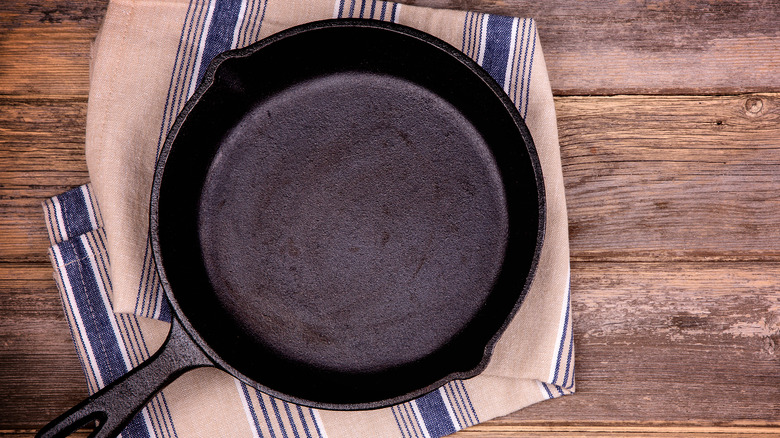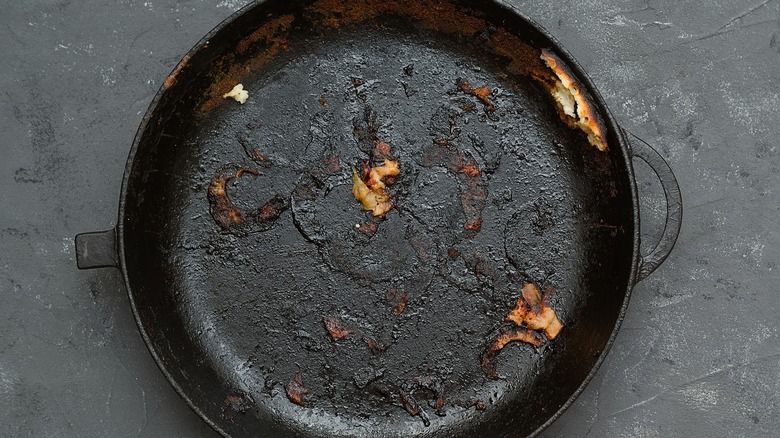How Hot Can Cast Iron Get Before It Becomes Damaged?
A cast iron pan might be one of the best kitchen investments you can make. The wildly popular cooking staples are usually affordable, durable, versatile, and can basically last a lifetime — as long as you care for them properly. Maybe you like your cast iron because it can transition from the stovetop to the oven, hold heat better than other materials, or add flavor to every dish thanks to its seasoning. Even with all of those perks, however, there are a few mishaps that can damage your pan, one of which is allowing it to get too hot.
Granted, only a very high temperature could physically damage this durable tool. Lodge, a popular brand that makes cast iron products, says its pans can safely heat up to 650 degrees Fahrenheit, while some Staub-brand cast iron skills can handle up to 900 degrees Fahrenheit. Some cast iron, however, can likely withstand higher temperatures of up to 1,500 degrees Fahrenheit before becoming substantially damaged.
This would take a lot of effort, however — even cooking directly over a flame on your outdoor charcoal grill would only heat your skillet to about 700 degrees Fahrenheit. In comparison, some enameled cast iron pans, like that stylish Le Creuset Dutch oven on your stovetop, might only be safe up to 500 degrees Fahrenheit due to its coating, so reserve these for your stovetop or oven.
Signs your cast iron is damaged
A well-seasoned cast iron skillet can help you achieve flavorful dishes, but if the skillet reaches extremely high temperatures — generally around 800 degrees Fahrenheit — all of that seasoning can burn off. This is the most common damage cast iron pans sustain. Additionally, if your pan heats beyond its maximum temperature, it may crack, though this is more likely to happen if you don't allow it to cool properly before washing. Other general signs of damage include holes, warping, and rust, so keep an eye on your beloved skillet if you think it hasn't received proper care.
Overall, cast iron skillets are quite durable for everyday cooking and should be fine at most high temperatures used in the kitchen. To make sure your pan lasts, allow it to fully cool before cleaning, and don't forget to use a paper towel to wipe it out before applying hot or soapy water. Let it fully dry to prevent rusting, and always re-season your cast iron pan with a neutral oil before storing. If this is your first rodeo, check out these tips you need in order to cook with a cast iron skillet.

